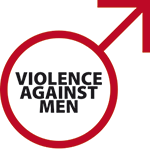Call 626-765-9967 / 833-646-1527
Venmo

CashApp

Men and Domestic Violence
If you are a man in an abusive relationship, it is important to know that you are not alone. It happens to people from all walks of life.
- Is she a very jealous person?
- Was there violence in her family of origin?
- Does she have mood swings, where one moment she feels loving and affectionate, and the next moment angry and threatening?
- Has she humiliated you in front of others?
- Does she try to discourage you from seeing your family or friends?
- Does she use sex or other favors as a way to “make up” after conflict?
- Does she criticize you for little things?
- Does she do or say things that are designed to make you feel “incompetent,” “crazy” or “stupid”?
Tips for the male victim of domestic violence
- Take the violence seriously. Many men are inclined to find it amusing when the “little woman” lashes out at them. (In one survey of college students, 20 percent of men who had been attacked by their girlfriends thought it was funny.Violence that seems harmless at first can escalate. The first time she hits you, tell her that if there’s a second time, it will be the last time she sees you and act on it.
- Don’t hit back. Don’t keep it a secret. If you cannot quickly leave (because of the children, for example) let someone know what is happening. Overcome the embarrassment and call the police.
- Talk to a counselor, to your doctor, to family members.
Speak out about your experience as a victim of abuse. Perhaps domestic violence would no longer be perceived as merely a woman’s issue.
Battered Men – The Hidden Side of Domestic Violence. 835,000 men battered each year, silent too long. Help for Battered Men – Resources for battered men; Help is available; Are You Battered or Abused?; Why Men Don’t Do Anything About It; Why Men Don’t Get Help?; What You Can Do; Washington Centers that Serve Men; Other Centers that Serve Men; On-line Help and Support; Latest Research Findings; Articles; In the Media.
Menstuff: Domestic Violence – Another Perspective.
Menstuff has compiled information, books, and resources on the issue of domestic violence. Unlike most other national, regional, local and website resources on Domestic Violence, we don’t exclude information about women as perpetrators and men as victims. We’re one of very few actually to provide information written for men who are in an abusive relationship. If you know of others, please let us know.
Men who are abused by women suffer in silence. In addition to the shame shared by many female victims of domestic violence, men must overcome gender stereotypes.
Domestic Violence Resources for Men Blog.
The Domestic Abuse Helpline for Men and Women (DAHMW) was found in October 2000. We offer support and services to victims of domestic violence and specialize in working with men in relationships with abusive women.
“Male Victims of Domestic Abuse,” by Marc E. Angelucci. (About.Com)
When we ignore male victims of domestic abuse, we also ignore their children, who continue to be damaged by witnessing the violence regardless of how severe it is. We cannot break this intergenerational cycle by ignoring half of it.
“Help for Battered Men; Domestic violence befalls mostly women, but men are victims, too. (WebMD)
More than 830,000 men fall victim to domestic violence every year, which means every 37.8 seconds, somewhere in America a man is battered.
This substantial article examines the issues of men who are victimized by domestic violence in heterosexual relationships. Over the past several years, there has increasing attention to the issues of men who are victimized by male domestic violence, most of which is based on research that relies on the Conflict Tactics Scale (CTS) developed by Murray Straus and Richard Gelles. In this current paper, Kimmel addresses the research that suggests men are victimized as often as women from both substantive and methodological perspectives. Through the process, Kimmel also discusses the CTS and raises substantive issues with the continued use of this tool to examine domestic violence.
